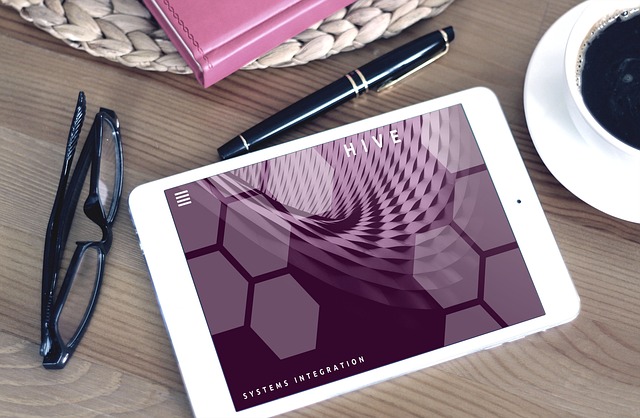AI lease agreement clause identification engines revolutionize commercial real estate (CRE) leasing, automating key clause extraction from legal documents and significantly reducing time and errors compared to traditional methods. These intelligent systems learn from vast databases, generating tailored lease drafts for specific property types and tenancy needs while promoting standardization and consistency. Leveraging NLP and machine learning, they swiftly analyze data sets, cross-reference clauses against legal standards, and ensure compliance, streamlining processes and enhancing efficiency for CRE professionals. However, challenges like legal complexity, jurisdiction differences, and tenant specifics require rigorous testing, human oversight, privacy considerations, and bias mitigation to maintain transparency and fairness in AI-driven lease drafting.
“The integration of Artificial Intelligence (AI) into commercial real estate is reshaping traditional processes, and one of its most promising applications is automated lease drafting. This innovative technology, powered by AI lease agreement clause identification engines, streamlines the creation of lease agreements, enhancing efficiency and accuracy.
The article explores how these engines work, delving into their role in identifying and structuring key clauses, and examines the benefits and challenges of implementing this cutting-edge solution within the industry.”
- Understanding AI's Role in Streamlining Lease Drafting Processes
- How AI Lease Agreement Clause Identification Engines Work
- Benefits and Challenges of Implementing Automated Lease Drafting in Commercial Real Estate
Understanding AI's Role in Streamlining Lease Drafting Processes

Artificial Intelligence (AI) is revolutionizing the way commercial real estate (CRE) lease drafting is conducted, offering a streamlined and efficient approach to a traditionally time-consuming task. AI engines are designed to analyze vast amounts of data from existing lease agreements, identifying key clauses and relevant language in a fraction of the time it would take a human lawyer. This technology acts as a powerful tool for real estate professionals, enabling them to automate repetitive tasks and focus on more complex aspects of leasing.
By leveraging AI lease agreement clause identification engines, CRE professionals can quickly generate draft lease documents tailored to specific property types and tenancy requirements. These engines learn from extensive databases, ensuring that the extracted clauses are accurate and relevant. This not only saves time but also reduces errors, as AI can consistently apply legal language across various lease scenarios, fostering a more standardized and consistent leasing process.
How AI Lease Agreement Clause Identification Engines Work

AI lease agreement clause identification engines utilize advanced natural language processing (NLP) and machine learning algorithms to analyze and extract critical clauses from lease agreements. These intelligent systems are trained on vast datasets of legal documents, enabling them to recognize patterns and understand the context behind specific terms. By processing large volumes of historical lease contracts, AI engines can quickly identify relevant clauses related to rent, term, renovations, default, and other key aspects.
Once an AI lease agreement clause identification engine processes a new lease document, it systematically scans through various sections, identifying and categorizing each clause. It then compares these clauses against a comprehensive database of legal standards, regulatory requirements, and industry best practices to ensure accuracy and compliance. This process not only saves time for commercial real estate professionals but also minimizes the risk of errors or omissions in lease drafting, fostering transparency and fairness throughout the entire process.
Benefits and Challenges of Implementing Automated Lease Drafting in Commercial Real Estate

Implementing automated lease drafting in commercial real estate brings a host of benefits, streamlining processes and enhancing efficiency. AI lease agreement clause identification engines can swiftly analyze vast amounts of data, including prior leases and industry standards, to generate draft agreements tailored to specific properties and tenants. This not only saves time for landlords and brokers but also reduces errors associated with manual drafting. The technology enables quick iterations, allowing parties to focus on negotiation rather than contractual minutiae.
However, challenges remain. Legal complexity and the need for precise, context-aware language pose hurdles. AI systems must grapple with varying jurisdiction laws and unique tenant requirements. Ensuring the generated clauses are legally sound and align with specific property attributes demands rigorous testing and human oversight. Additionally, data privacy concerns and the potential for algorithmic bias necessitate careful consideration and robust safeguards to maintain transparency and fairness throughout the lease drafting process.
AI lease agreement clause identification engines have the potential to revolutionize commercial real estate by streamlining lease drafting processes, enhancing efficiency, and reducing human error. These advanced tools leverage machine learning algorithms to analyze vast amounts of data, quickly identifying relevant clauses from previous agreements. However, while the benefits are substantial, there are also challenges to consider, such as ensuring accuracy, addressing legal complexities, and integrating these systems into existing workflows seamlessly. As the technology continues to evolve, real estate professionals who adopt automated lease drafting early will be better positioned to navigate the changing landscape, ultimately fostering a more efficient and standardized leasing process.
